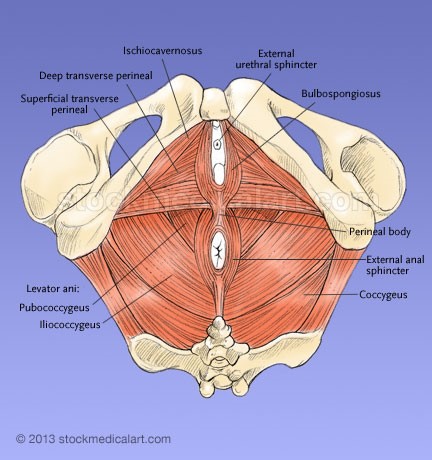Nutrition plays such an important role in our pregnancies and post-partum periods. Breastfeeding requires time…

The Pelvic Floor Series: 1
The muscles in the pelvic floor are a functional group of many muscles that are truly the foundation of most of what we do as humans. They work to provide stability in the pelvis, spine and hips. They coordinate with the diaphragm to control intra-abdominal pressure. They are implemental in urination and bowel movements, as well as sexual function. When these muscles are too weak or too tight they don’t function well, and this can cause problem in our daily life. From peeing and pooping, to exercise, to sitting, to sex – when the pelvic floor is not 100%, neither is our daily life. In this blog series we will touch on several problems that can arise when we have pelvic floor dysfunction.
Let’s dig right in and talk about bowels. After the holidays a lot of us feel bloated, like we just put on an extra 10 pounds, and it all feels like it landed in our gut. Sometimes this bloating can be a pelvic floor muscle problem causing issues with regular bowel function.
What Are Normal Bowel Movements?
So, what’s normal? You should have a bowel movement from 3 times daily to every other day. The consistency (size, shape and firmness) of your poop should be soft but solid. You should not have to strain hard. There should not be any pain associated with bowel movements.
Symptoms of Pelvic Floor Dysfunction Related to Bowel Movements
The muscles in the pelvic floor have to relax and lengthen to allow for stool to exit easily. If your pelvic floor muscles are too weak or too tight you may find that you have issues with bowel movements. These issues can present themselves in several different ways such as:
- Straining too hard
- Infrequent bowel movements (less often than every other day)
- Frequent bowel movements (more than 3 per day)
- Painful bowel movements
- Firm, small pellet like size/shape
- Leaking of stool
If you have any of the symptoms mentioned above, you might benefit from seeing a specialist in pelvic floor to retrain your muscles to restore normal function. This involves several visits to determine whether the dysfunction is weakness or overactivity/tension. Based on the findings, a plan of care is set up to retrain your muscles to improve bowel function, restore healthy function and reduce the symptoms you are experiencing.
Reducing Bowel Symptoms
Here are a few things you can begin doing to help with bowel symptoms, especially constipation:
- Use a step stool or invest in a squatty potty to place the pelvic floor in an ideal position
- Eat same size meals each day
- Drink water! Half your body weight in ounces daily.
- Practice diaphragmatic breathing (https://www.foundationalconcepts.com/the-pelvic-chronicles-blog/diaphragmatic-breathing/ )
- Get regular exercise, 3-4 days a week 30-45 minutes
- Take a probiotic
- Reduce processed foods and look to “real” food like fruits and veggies
A Treatment Plan Designed for You
There are more diet, exercise and general health recommendations that will also come with treatment by a specialist in pelvic health. These will aid in a whole person approach to restoring healthy function of your systems. Because this is a multi-system issue, it is imperative that your provider consider the whole person in your plan of care. You should expect to learn more than you ever wanted to know about bowel movements, but this information will be beneficial for your lifetime.
There are many issues that can arise from poor function in the pelvic floor and this blog series is here to address several of these, bringing you more information about each one. If you find that these blog topics hit home and you are having some or many of these symptoms, you should consider a free consultation with one of our specialists to determine if treatment is right for you. Click this link to schedule a consultation now (https://www.foundationalconcepts.com/pelvic-pain-therapy/contact/ )
–Sarah Dominguez, PT, MSPT, CLT, WCS




